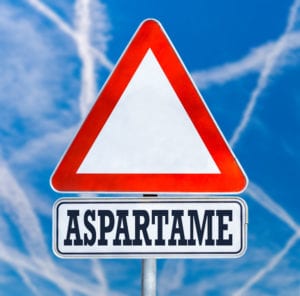Written by Joyce Smith, BS. A study demonstrates in a mouse model and in humans that consumption of non-caloric sweeteners are associated with increased risk for glucose intolerance, diabetes and metabolic syndrome.
 The increased use of non-caloric artificial sweeteners (NAS) remains controversial as a weight loss tool for those with glucose intolerance and type 2 diabetes 1 . While NAS are sugar-free, some studies have suggested that they can effect the body’s ability to utilize glucose and potentially contribute to metabolic syndrome and diabetes. They may also have the potential to alter the composition and function of intestinal microbiota in both healthy lean and overweight individuals,2,3 and contribute to the development of glucose intolerance 4. A 12-week study 5 by Suez et el investigated whether the widespread use of NAS may be altering our gut microbiota and adding to the obesity and diabetic epidemic that they were intended to prevent.
The increased use of non-caloric artificial sweeteners (NAS) remains controversial as a weight loss tool for those with glucose intolerance and type 2 diabetes 1 . While NAS are sugar-free, some studies have suggested that they can effect the body’s ability to utilize glucose and potentially contribute to metabolic syndrome and diabetes. They may also have the potential to alter the composition and function of intestinal microbiota in both healthy lean and overweight individuals,2,3 and contribute to the development of glucose intolerance 4. A 12-week study 5 by Suez et el investigated whether the widespread use of NAS may be altering our gut microbiota and adding to the obesity and diabetic epidemic that they were intended to prevent.
Mice fed water laced with three commonly used NAS (saccharin, sucralose and aspartame) developed significant glucose intolerance compared to control mice that drank water or glucose water (P<0.001). Repetition with different types of mice and different doses of NAS again produced glucose intolerance. Saccharin, which demonstrated the greatest degree of glucose intolerance, was given as 0.1 mg ml-1 pure saccharin (equivalent to 5mg per kg body weight in humans), to both lean mice and mice with diet-induced obesity. Both groups of mice developed significant glucose intolerance after 5 weeks compared to their respective controls (P<0.0002 and P<0.03).
Researchers then investigated a hypothesis that gut microbiota are involved in the development of glucose intolerance. Treating mice with antibiotics abolished their glucose intolerance. Transplanting fecal microbiota from the saccharin-fed mice to germ-free (sterile mice) transferred the glucose-intolerant phenotype to the germ-free mice and developed glucose intolerance (P<0.004), thus validating that glucose intolerance is mediated by gut microbiota.
Comparing shotgun metagenomic sequencing of fecal samples before and after 11 weeks of saccharin or glucose consumption revealed that both saccharin-fed mice and those receiving a fecal transplant from saccharin-fed mice had different bacterial compositions compared to mice given glucose or no saccharin. These profoundly changed bacterial populations are known for their propensity to promote obesity, diabetes, and metabolic syndrome in both mice and humans.
Finally, the research team demonstrated that NAS consumption in humans is associated with impaired glucose intolerance. Referencing data collected from 381 non-diabetic volunteers, they found that those with the highest amounts of self-reported NAS consumption had the poorest glucose tolerance levels as well as different gut microbiota profiles and a greater risk for glucose intolerance compared to those who did not consume NAS (p<0.001). To further test a potential causal relationship between human NAS consumption and glucose intolerance, seven healthy non-NAS volunteers were given saccharin (5 mg/kg of body wt.) for 6 consecutive days. Four of the seven had poorer glycemic responses (NAS responders) and altered gut microbiota compared to their baseline values (p<0.001), while three had no changes (NAS non-responders). Lastly, germ-free mice who received fecal transplants from 2 of the 4 NAS- responders developed glucose intolerance and had similar gut microbe profile as did transplants from saccharin-consuming mice; however, the same fecal transplants from the two NAS non-responders had no effect on germ-free mice.
These findings suggest that NAS may have directly contributed to enhancing the exact epidemic that NAS users themselves were intending to fight. NAS consumption in both mice and humans increased the risk of developing glucose intolerance and metabolic disease. Clearly, the adverse metabolic effects were mediated by alterations in the composition and function of the microbiota. Moreover, additional studies are warranted to reassess the increasing use of artificial sweeteners. They have metabolic consequences and may not be the perceived ideal solution for the “no calorie” sweet tooth.
Source: Suez, Jotham, Tal Korem, David Zeevi, Gili Zilberman-Schapira, Christoph A. Thaiss, Ori Maza, David Israeli et al. “Artificial sweeteners induce glucose intolerance by altering the gut microbiota.” Nature 514, no. 7521 (2014): 181.
© 2014 Macmillan Publishers Limited. All rights reserved
Posted April 18, 2018.
Joyce Smith, BS, is a degreed laboratory technologist. She received her bachelor of arts with a major in Chemistry and a minor in Biology from the University of Saskatchewan and her internship through the University of Saskatchewan College of Medicine and the Royal University Hospital in Saskatoon, Saskatchewan. She currently resides in Bloomingdale, IL.
References:
- Gardner C, Wylie-Rosett J, Gidding SS, et al. Nonnutritive sweeteners: current use and health perspectives: a scientific statement from the American Heart Association and the American Diabetes Association. Circulation. 2012;126(4):509-519.
- Turnbaugh PJ, Ley RE, Mahowald MA, Magrini V, Mardis ER, Gordon JI. An obesity-associated gut microbiome with increased capacity for energy harvest. nature. 2006;444(7122):1027.
- Ley RE, Turnbaugh PJ, Klein S, Gordon JI. Microbial ecology: human gut microbes associated with obesity. Nature. 2006;444(7122):1022.
- Henao-Mejia J, Elinav E, Jin C, et al. Inflammasome-mediated dysbiosis regulates progression of NAFLD and obesity. Nature. 2012;482(7384):179.
- Suez J, Korem T, Zeevi D, et al. Artificial sweeteners induce glucose intolerance by altering the gut microbiota. Nature. 2014;514(7521):181-186.
